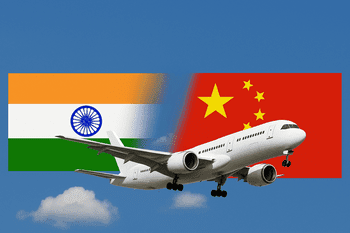
If you’re planning a trip to China, there’s a good chance that shopping for silk is on your itinerary. After all, China is renowned for its centuries-old silk production and offers a dizzying array of silk products. As a country with a deep-rooted culture of silk weaving, China is indeed a silk shopper’s paradise. However, with countless shops touting their wares as ‘authentic,’ it can be somewhat challenging to discern the genuine from the faux.
That’s where this guide comes in handy. Here, we’ll take you through the ins and outs of how to shop for authentic silk in China, from understanding the different types of silk to identifying quality silk products, negotiating prices, and even suggesting some of the best places to shop. Whether you’re a seasoned shopper or a novice, this guide aims to help you navigate the silk markets of China with confidence and ease.
A Journey Through Time: The Origins of Chinese Silk
1. The Birth of a Timeless Treasure
The history of Chinese silk dates back more than 5,000 years, with the earliest traces of silk production found in the Neolithic site of Jiahu in modern-day Henan Province. As far back as 3630 BC, the ingenuity and sophistication of the ancient Chinese people enabled them to transform the humble silkworm cocoon into exquisite silk textiles. As the Silk Road was established, the demand and appreciation for Chinese silk spread to distant corners of the world, from ancient Rome to the Byzantine Empire and beyond.
2. The Imperial Patronage of Silk Production
Throughout its history, Chinese silk has been inextricably linked to royalty and aristocracy. From the Han and Tang dynasties to the opulent Qing court, the imperial patronage of silk production fostered innovation, artistry, and the refinement of silk weaving techniques that continue to define the Chinese silk industry today.
Unearthing Regional Specialties: Styles and Techniques of Silk Production
1. Suzhou, the City of Silk
With a silk weaving history of over 2,000 years, Suzhou is widely acknowledged as the cradle of Chinese silk. The city’s prestigious reputation for producing the finest silk textiles is exemplified by the intricate and time-consuming double-sided embroidery, a rare skill that perfectly showcases the intricate craftsmanship of Suzhou artisans.
Other notable silk products native to Suzhou include Silk Brocade, an exquisite fabric traditionally reserved for imperial use, and the delicate Silk Gauze, a highly sought-after treasure for its light and ethereal qualities.
2. Hangzhou, the Land of Prosperity
Renowned for its stunning West Lake, the city of Hangzhou is also a bastion of Chinese silk production. From the smooth and lustrous Hangzhou silk to the vibrant and exquisitely crafted complex brocades, the artistry and ingenuity of Hangzhou’s silk weaving legacy remain unmatched to this day. In addition to a rich silk tradition, the city is also a hub for tea culture, which lends another layer of charm to the silk shopping experience in this enchanting destination.
3. Nanjing, the Core of Brocade
As the ancient capital of several dynasties, Nanjing boasts a distinguished history of silk production. Known for its signature Yunjin brocade—a luxurious and intricate weaving style favored by Chinese emperors, Nanjing stands tall as a testament to China’s artistic and cultural grandeur. Rich in texture and character, Nanjing’s silk brocade continues to be highly coveted for its vibrant designs, sophisticated craftsmanship, and cultural cachet.
The Silk Shopping Experience: Navigating China’s Vibrant Markets and Boutiques
1. Visit Authentic and Reputable Silk Outlets
To ensure that you purchase high-quality and genuine silk products, focus your shopping expedition on reputable and established silk boutiques or government-run silk factories. Top destinations for silk shopping in China include Suzhou Silk Museum and Factory, Hangzhou China Silk Town, and Nanjing Wanhua Silk Fabrics Market, where you can find an extensive range of premium silk products, observe traditional silk production techniques in action, and even participate in silk-making workshops.
2. Recognising Quality Silk
When shopping for silk, it’s important to be well-versed in the characteristics that set premium silk apart from inferior counterparts. Authentic Chinese silk should feel smooth and cool to the touch, with a subtle sheen that reflects the natural luster of the silk fibers.
Be wary of overly shiny or slippery silk, as this may indicate the presence of synthetic materials. A simple way to test the authenticity of silk is the ‘burn test,’ whereby burning a small strand of the fabric should produce a smell similar to burning hair and leave behind powdery ash.
Mastering the Art of Haggling: Tips for Negotiating the Best Price
1. Do Your Homework
Before embarking on your silk shopping spree, research the average prices for different silk products to establish a benchmark for your budget. Familiarise yourself with the varying silk types, textures, and regional specialties to help make an informed decision while shopping.
2. Be Confident and Persistent
Haggling for the best price can require a degree of confidence and persistence. Start by offering a price lower than your desired final price, and engage in a friendly negotiation with the vendor. It’s essential to maintain a positive attitude and be prepared to walk away if both parties cannot come to an agreement.
Embarking on a Silk-Laden Adventure: The Takeaway
As you traverse the enchanting landscape of this mystical land, immerse yourself in the rich history, exquisite beauty, and unparalleled craftsmanship of authentic Chinese silk. With our comprehensive guide and expert advice on all things travel-related in China, the treasures of its vibrant markets and alluring boutiques await your discovery.
Return home laden with luxurious memories, which, like the sublime silk you carry, will serve as a lasting testament to the unforgettable adventures you shared with Ikky In China.



